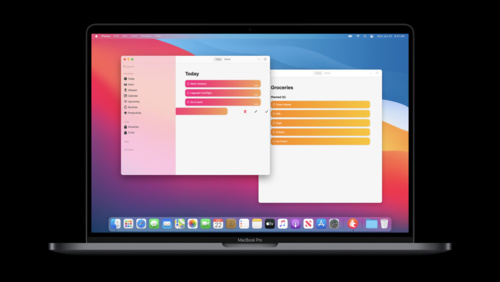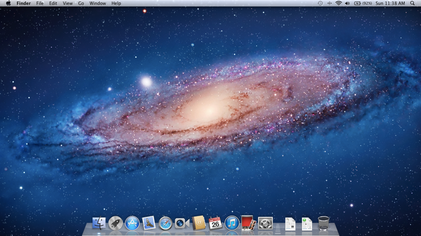You just don't get it. Even a 2-in-1 convertible (which is what I was talking about) Mac is still not as good of an end-user experience as using a damn iPad to run iPadOS apps.
So you've tried running
iOS Apps on a 2-in-1 tablet, then? Apps written from the ground up for a multi-touch-only operating system? As in, not desktop Windows apps made with bigger buttons because there is zero market for Windows applications that aren't optimised for desktop/laptop.
...and who said anything about it being "as good" as a real iPhone/iPad? It just has to be
better than running touch-centric apps on a non-touch laptop.
You do realize that there is a Windows release after Windows 8, right?
I never said there wasn't. You do realise that Windows 8 was a major flop (for many reasons, but including the attempt to force a mobile-inspired UI onto desktop users without a large mobile software library to back it up) making Windows 10 a really hard sell and resulting in MS having to extend support for the 11-year-old Windows 7 until early
this year...? Those who ignore history...
you'll see that it's not Apple's MO to lock everything down.
It is
absolutely Apples MO to lock everything down where possible, all their other product lines are locked down, and they'd
love to get a 30% cut of every software/services transaction on a Mac - but they clearly understand that, in the current climate, locking down
Mac OS would not be acceptable to many Mac OS customers. If the day comes where their market research suggests that climate has changed, locked-down MacOS will suddenly become the magical and courageous thing to do.
As for Apple's stance on direct booting other OSes, that is something that COULD change as Apple made such a change back in 2006 when in the middle of the last architecture transition and because users were begging for a way to get Windows XP to boot and run on Intel Macs.
Apple's stance on
anything could change. You've cited one of many examples. That's why I'm concentrating on the one fact they have explicitly committed to - that they will allow iOS Apps to run natively on Apple Silicon - rather than your personal interpretation of their carefully chosen words during interviews and presentations. (...and, frankly, even that could always turn out to be missing in action when ASi Macs finally launch).
...and yes, the bar to that one was
very low because only a disk partitioning utility and an existing open-source EFI "BIOS emulation" module - none of which were Apple proprietary - prevented you from just inserting a bog-standard Windows XP DVD and installing away. Geek types had Windows XP up and running on Intel Macs almost on day 1 without any help from Apple - Bootcamp was just a polished and shrink-wrapped way for regular users to do the same without hosing their MacOS installation.
No. Secure Boot has absolutely nothing to do with code execution. It's solely a boot process control mechanism designed to ensure that the OS you are attempting to boot is valid, signed, and not tampered with.
...and if you turn it off you could possibly load a tampered-with OS that (say) lets you run
iOS Apps without downloading them from the App store. I've never suggested that this is anything but speculation but there
is an argument for tying features like iOS support to having secure boot enabled. That hasn't happened so far - but then they're still supporting Macs that don't support secure boot, and iOS support is a brand new feature.
Should Apple decide to do that, they're certainly not going to let former promises about "not locking down MacOS" deter them from locking down brand new features.
There is no "iOS subsystem within macOS".
iOS apps will not run on MacOS without there being MacOS implementations of iOS-only frameworks like UIKit that deal with things like mapping mouse/trackpad/keyboard events to touch events. If you think that's trivial, then you haven't thought about the issue in depth. If you look at the help for the existing iOS "simulator" in XCode, there's a laundry list of frameworks that it doesn't support. If you want to nitpick as to whether that constitutes a "subsystem" then feel free to choose some other name, but the point is that it's not something that appeared by magic "because Apple Silicon". Apple had no need to add iOS app support to MacOS - it's not something that a third party could hack together for anything other than a gimmick (if only because it needs to work with the App Store) - and the fact that they have gone that extra mile proves that they don't see Catalyst alone as sufficient.
Please explain then. I would love to hear what you come up with.
Do you want to start with the way that Apple II software didn't run on a Commodore 64 even though they both had a 6502 processor? Or that Windows for PowerMac never appeared (other than via emulation), even during the period when MS were shipping a PPC version of NT 3.51 for IBM and Motorola PPC systems? Or that the PPC Mac couldn't run PS3 games even though they both used PPC?
...or that ASi Macs won't be able to (usefully) run ARM Windows or ARM Linux unless Apple release (or support the development of) Linux & Windows drivers for ASi graphics, ASi disc controllers and whatever other functions currently handled by generic PC industry hardware that Apple moves onto the ASi SoC.
The Intel/x86 platform is an aberration because virtually all modern x86 personal computers (I'm sure there are exceptions) evolved from the proprietary IBM PC/AT system, which has always been joined at the hip with DOS/Windows and enjoyed such a dominant market share that any third party maker of disc controllers, GPUs, networking hardware etc. has been obliged to ship them with x86/Windows drivers. So when people talk about "x86" or "Intel" they
actually refer to a loose collection of hardware and firmware standards that define a modern Windows PC. The reason that it was so easy to get Windows running on the early Intel Macs was that they basically
were PCs, made from standard PC components. The Windows installer would run with a minor tweak to the (open source) firmware and all the required drivers were downloadable from the chipset manufacturers' websites. Bootcamp just wrapped it up and tied a ribbon around it.
We don't know what the exact
hardware architecture of ASi Macs will be (there's some clues from the WWDC stuff but most of it is 'use our
software frameworks as so and we'll worry about the hardware') - we know that things like PCIe and Thunderbolt/USB/3/4 will be there but we also know that - at the very least - the graphics and disc controller will be proprietary - and Apple's only commitment is to provide closed, MacOS drivers for those, which leaves them free to completely change the hardware interface with every subsequent new Mac.
...but there we go off on an irrelevant tangent again because you've thrown in a red herring and insisted that it is a banana.
You do realize that iOS is effectively macOS with different UI frameworks, right?
You can't run native MacOS Apps (even ones re-compiled for ASi) on iOS and you can only run native iOS Apps on ASi MacOS because Apple has added MacOS implementations of the required framework, added the ability to install iOS Apps on Mac to the App store etc. Whether that's compatible with your statement "iOS is effectively macOS" is another one of your red herring/bananas.
You do realize that for many iOS Apps, a significant part of the iOS-specific development work is in the UI, and re-writing one to use AppKit/Catalyst/whatever (and testing and refining the result) can be a non-trivial job? Which is probably why Apple have conceded that Catalyst is not sufficient in itself by adding iOS support to MacOS. First, to use Catalyst, you have to modify your source code and, secondly, nothing in Catalyst is going to make your gesture-driven game or Pencil-based sketching app usable on a non-touch laptop.
"Merging" implies more than one platform's apps are running on another platform.
Feel free to cherry pick specific interpretations of non-technical words that support your argument.
If there was an actual merger taking place, we'd have more serious interface conventions from one OS combining with another.
Hate to break it to you, but the iOSsification of the MacOS UI has been an ongoing drip-drip process since 2011 when Mac OS Lion removed the scrollbar arrows and made "reverse scrolling" the default.

en.wikipedia.org
...the whole reverse scrolling/scrollbars/scroll arrows thing is a great example of how what works for a touchscreen doesn't work for a mouse - or even a trackpad - by the way.




